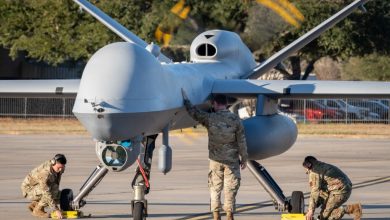Rheinmetall Trials Mission Master Autonomous System in Portugal

Rheinmetall has deployed its Mission Master autonomous ground system in Portugal, putting next-generation maritime defense technology through its paces at NATO’s premier unmanned systems exercise.
Operational Exercise Robotic Experimentation and Prototyping with Maritime Unmanned Systems (OPEX REPMUS 2025) and Dynamic Messenger (DYMS) allowed the Rheinmetall team to showcase the versatility of the Mission Master, demonstrating autonomous navigation, modular payload integration, and robust performance in harsh coastal environments.
The platform supported reconnaissance, surveillance, and logistical tasks, while integrating seamlessly with NATO-standard command-and-control systems.
Operator-in-the-loop tools allowed military users to manage distributed autonomous assets intuitively, reinforcing Rheinmetall’s focus on operational relevance and tactical utility.
Organized by the Portuguese Navy, NATO, and the European Defence Agency, the exercise emphasized innovation, interoperability, and operational integration across maritime, undersea, airborne, and ground-based domains.
It also brought together allied militaries, academic institutions, and industry leaders in Troia and Sesimbra to test autonomous platforms in realistic, mission-relevant conditions.
Gregor Mannherz, Marine Systems Sales Manager at Rheinmetall Electronics, said that “the Mission Master has impressively demonstrated how technology and integration can effectively support our defense partners.”
NATO’s Premier Exercise for Advancing Maritime Autonomy
REPMUS/DYMS 2025 served as a hub for testing multi-domain unmanned systems and advancing NATO’s interoperability goals.
Alongside Rheinmetall, participating companies included EvoLogics, North.io, and Euroatlas, each contributing unmanned undersea, aerial, and ground platforms connected through Battlesuite, a shared information space designed to eliminate data silos and enable rapid integration of mission-ready capabilities.
The exercise also demonstrated scalable, software-defined solutions for expeditionary harbor protection, coastal defense, and manned-unmanned teaming, validating procedures for operational integration of unmanned vehicles.
By running live scenarios combining autonomous ground, aerial, and maritime systems, NATO and industry partners accelerated development cycles and refined tactical doctrines for future operations.





